Sure-Seal is the first and only healthcare mask liner. By placing it under an N-95 mask or surgical mask it distributes the force applied by the mask more evenly over your skin to prevent pain, cuts and pressure ulcers. It also can reduce rashes and skin irritation caused by prolonged mask use. It’s quick and easy to don, reusable and hypoallergenic.
This project was developed with Adam Dimla and in collaboration with the team from Design Can Help.
This project was developed with Adam Dimla and in collaboration with the team from Design Can Help.
PROBLEM STATEMENT
During the Corona-virus (COVID-19) pandemic nurses, doctors and healthcare workers were forced to wear N-95 masks for very extended and prolonged amounts of time – far longer periods of time, and more repeatedly, than the masks were originally designed for. This caused pressure ulcers, cuts and infections to form along the areas of the face where the mask was pressing into.
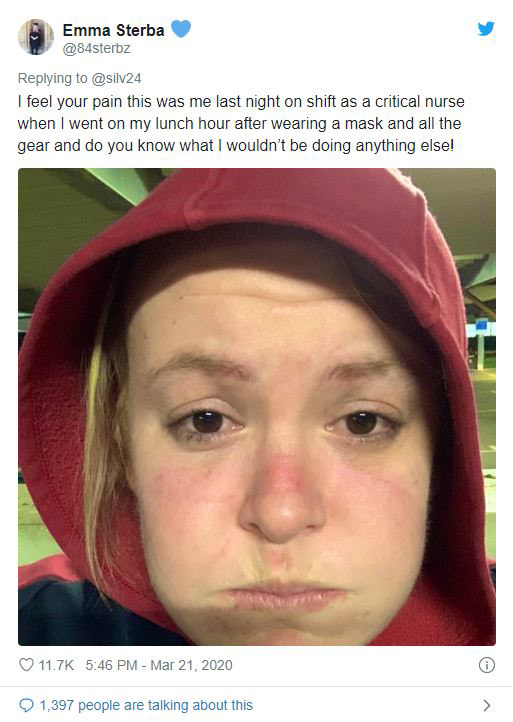

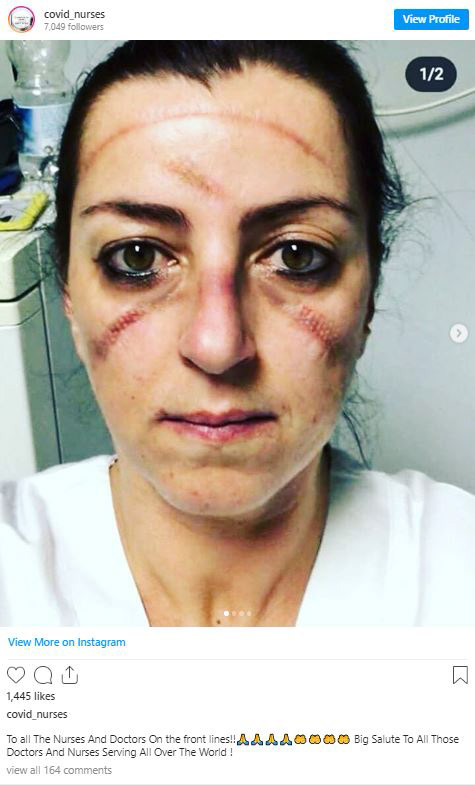
Photo credit: Time.com and Refinery29.com.
BACKGROUND RESEARCH
WHY ARE PRESSURE ULCERS FORMING UNDER N-95 MASKS?
According to Forbes.com, “…those characteristics [that] make it effective at filtering out airborne particles ... also creates a frictional force and pressure load. The study found pressure ulcers form as the result of “intense and prolonged” pressure…the pressure they create is concentrated on a small area of skin due to the small surface area of the mask’s edge…The researchers calculated that the resulting pressure from medical masks can be greater than an equivalent of 3 pounds per square inch on the face’s soft tissue.” (Forbes, April 2020)
Prof. Karen Ousey recently did a study on this type of skin damage. She says, '“The wearers are sweating underneath the masks, and this causes friction, leading to pressure damage on the nose and cheeks. There can be tears to the skin as a result, and these can lead to potential infection.”' (MedicalNewsToday, April 2020)
WHY ARE PRESSURE ULCERS FORMING UNDER N-95 MASKS?
According to Forbes.com, “…those characteristics [that] make it effective at filtering out airborne particles ... also creates a frictional force and pressure load. The study found pressure ulcers form as the result of “intense and prolonged” pressure…the pressure they create is concentrated on a small area of skin due to the small surface area of the mask’s edge…The researchers calculated that the resulting pressure from medical masks can be greater than an equivalent of 3 pounds per square inch on the face’s soft tissue.” (Forbes, April 2020)
Prof. Karen Ousey recently did a study on this type of skin damage. She says, '“The wearers are sweating underneath the masks, and this causes friction, leading to pressure damage on the nose and cheeks. There can be tears to the skin as a result, and these can lead to potential infection.”' (MedicalNewsToday, April 2020)
WHERE ARE THE PRESSURE ULCERS FORMING?
According to Forbes.com, “...areas where bone is close to the skin, such as the nose, are prone to greater damage.” (Forbes, April 2020) This is clearly visible in the photos below.
According to Forbes.com, “...areas where bone is close to the skin, such as the nose, are prone to greater damage.” (Forbes, April 2020) This is clearly visible in the photos below.
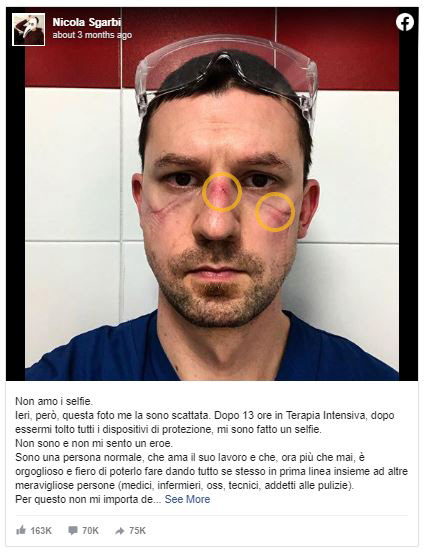

WHY WON’T A BANDAGE WORK?
Forbes says, "...be mindful that bandages on irritated areas of the face would prevent masks from properly keeping out airborne particles...mask designs which take the pressure away from the bridge of the nose could prevent the formation of pressure ulcers." (Forbes, April 2020)
Forbes says, "...be mindful that bandages on irritated areas of the face would prevent masks from properly keeping out airborne particles...mask designs which take the pressure away from the bridge of the nose could prevent the formation of pressure ulcers." (Forbes, April 2020)
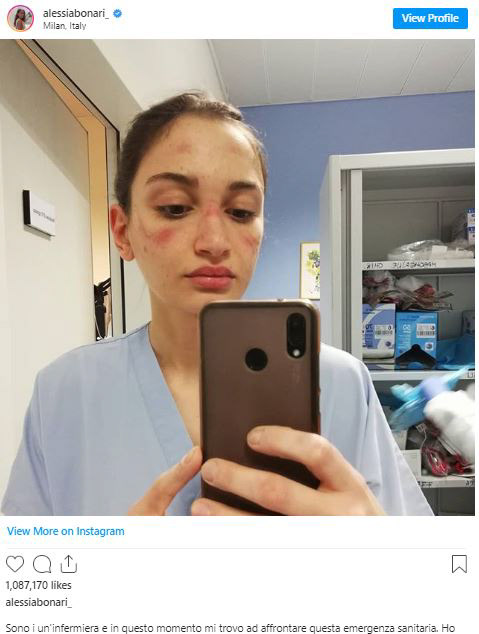
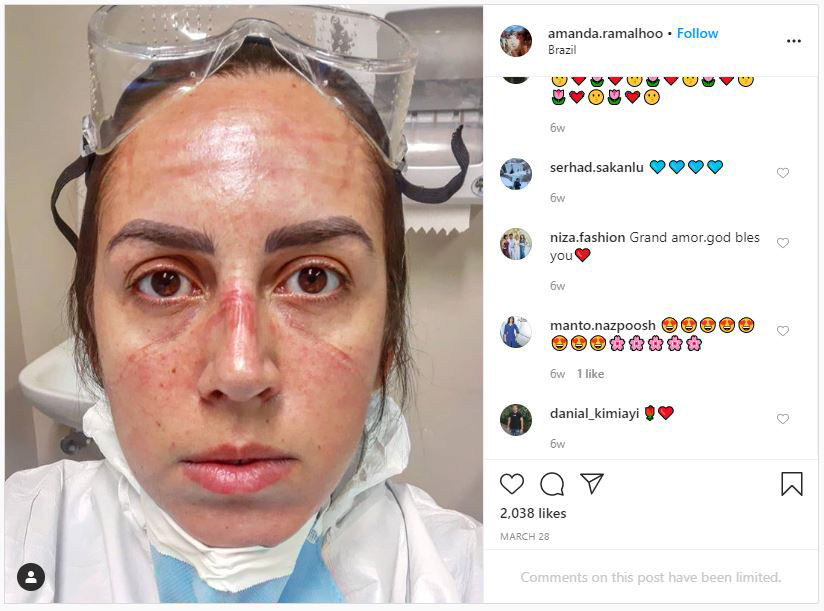

MedicalNewsToday says, "Usually, dressing a wound would help minimize further damage and prevent infection. However, in this situation, a dressing might prevent the mask from fitting correctly and, therefore, increase infection risk." (MedicalNewsToday, April 2020)
BRIEF:
How might we reduce pain and pressure ulcers due to prolonged use of N-95 masks?
How might we reduce pain and pressure ulcers due to prolonged use of N-95 masks?
USER RESEARCH
We interviewed 3 nurses working with COVID-19 patients to try to understand the problems, empathize with our users and gain insights.
Here are some takeaways from the interviews:
- The process of donning and doffing PPE is a long and multi-step process, with many hand washing phases in between
- Surgical masks are worn most of the time and N-95 masks are worn only if they have to take "airborne precaution"
- Glasses become uncomfortable
- Everyone must undergo an N-95 fit test to have the best seal - are multiple sizes
- Many have inflammation of the skin because mask material is sub par
- Experiences rubbing and irritation on bridge of nose, upper cheek bones
- Size adjustable is better
- Design must be removable without getting COVID-19 on your face and without damaging existing cuts**
- DIY solutions are being embraced
We interviewed 3 nurses working with COVID-19 patients to try to understand the problems, empathize with our users and gain insights.
Here are some takeaways from the interviews:
- The process of donning and doffing PPE is a long and multi-step process, with many hand washing phases in between
- Surgical masks are worn most of the time and N-95 masks are worn only if they have to take "airborne precaution"
- Glasses become uncomfortable
- Everyone must undergo an N-95 fit test to have the best seal - are multiple sizes
- Many have inflammation of the skin because mask material is sub par
- Experiences rubbing and irritation on bridge of nose, upper cheek bones
- Size adjustable is better
- Design must be removable without getting COVID-19 on your face and without damaging existing cuts**
- DIY solutions are being embraced
Photo by Matthew Henry
HOW MIGHT DESIGN HELP?
Professors who did a recent study on device-related pressure ulcers instructed designers and manufacturers to "...reduce high pressure and shear points, alleviate frictional forces and stress concentrations on skin and within deeper tissues, and optimise the microclimate...Most common causes of DRPU (device-related pressure ulcers) can be prevented by improving the design of medical devices or by adding smart materials and structures at the interface between the skin and device." (Journal of Wound Care, Feb 2020)
In a list of "Functional objectives of medical device design" in the study, here are some of the tips that the researchers advise:
- "Absorb mechanical loads applied by a device", that is, distributes force more evenly over surface
Other functional requirements we identified:
Professors who did a recent study on device-related pressure ulcers instructed designers and manufacturers to "...reduce high pressure and shear points, alleviate frictional forces and stress concentrations on skin and within deeper tissues, and optimise the microclimate...Most common causes of DRPU (device-related pressure ulcers) can be prevented by improving the design of medical devices or by adding smart materials and structures at the interface between the skin and device." (Journal of Wound Care, Feb 2020)
In a list of "Functional objectives of medical device design" in the study, here are some of the tips that the researchers advise:
- "Absorb mechanical loads applied by a device", that is, distributes force more evenly over surface
- "Match stiffness or elastic modulus in design so that the elements contacting the skin are at a stiffness that is near that of skin and underlying soft tissue."
- "...avoiding sharp or curved geometries in the device surfaces that contact the skin."
- "Minimise the coefficient of friction"
ETC. (Journal of Wound Care, Feb 2020)
- "...avoiding sharp or curved geometries in the device surfaces that contact the skin."
- "Minimise the coefficient of friction"
ETC. (Journal of Wound Care, Feb 2020)
Other functional requirements we identified:
- Focuses on the nose bridge and on the cheek bones
- Good with humidity, wet skin and dry skin
- Does not trap heat
- Allows for an adequate seal
PROCESS: STAGE 1 CONCEPTS
MEDICAL ADHESIVES
An early concept was to use a tape (kinesiology tape due to its flexibility) to protect the face and skin, but was soon abandoned due to difficulty and potential for contamination in removal. Also, tape could exacerbate the problem for skin that was already scabbed or damaged. This still would be viable for a disposable option.
MEDICAL ADHESIVES
An early concept was to use a tape (kinesiology tape due to its flexibility) to protect the face and skin, but was soon abandoned due to difficulty and potential for contamination in removal. Also, tape could exacerbate the problem for skin that was already scabbed or damaged. This still would be viable for a disposable option.
From 3M.com
This is already a product that exists on the market. (See image below) We thought we might propose a DIY application method that uses whatever healthcare workers might have on hand or could easily purchase.
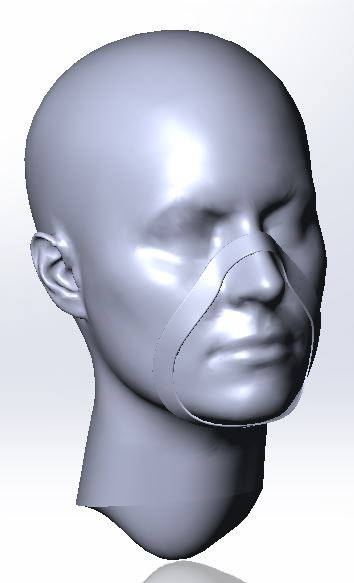
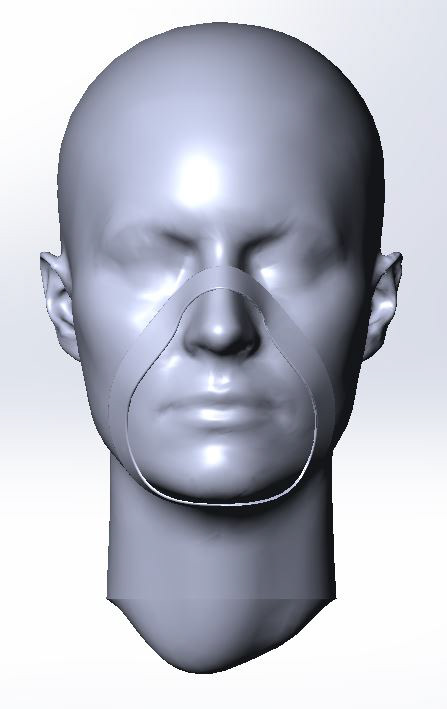
FINAL DESIGN
This project was developed with Adam Dimla and in collaboration with the team from Design Can Help.